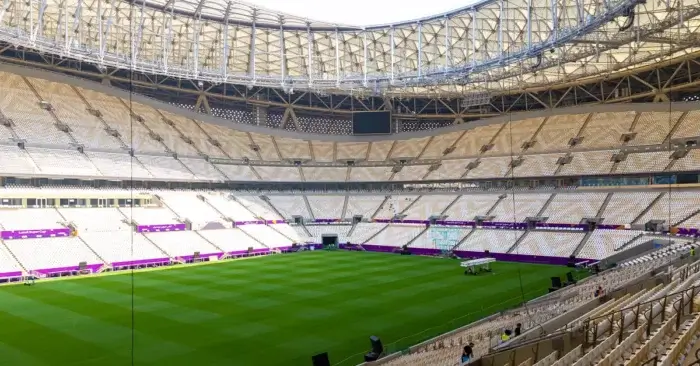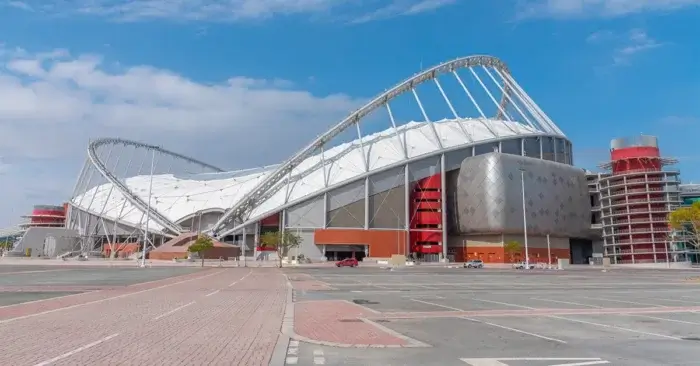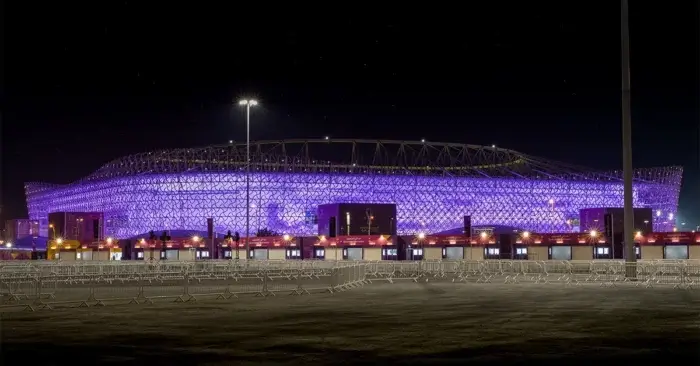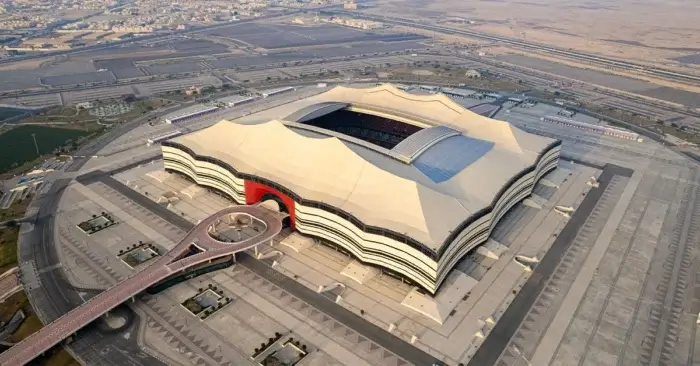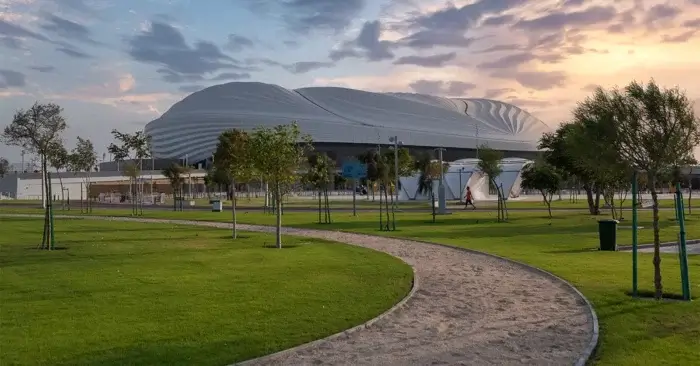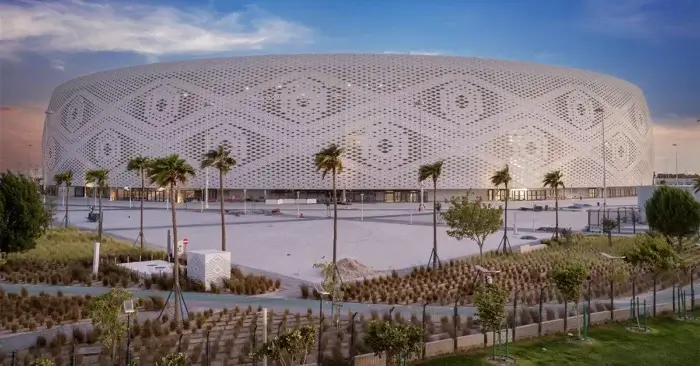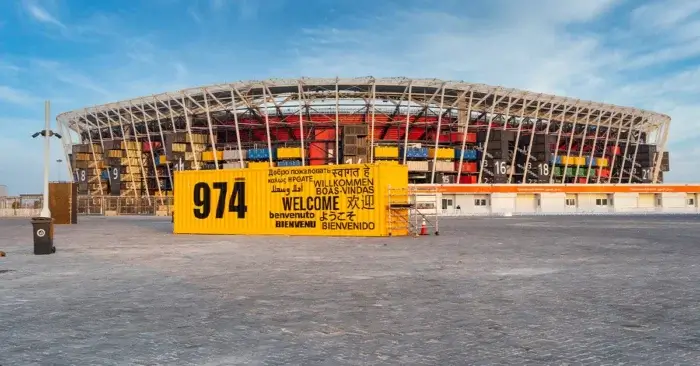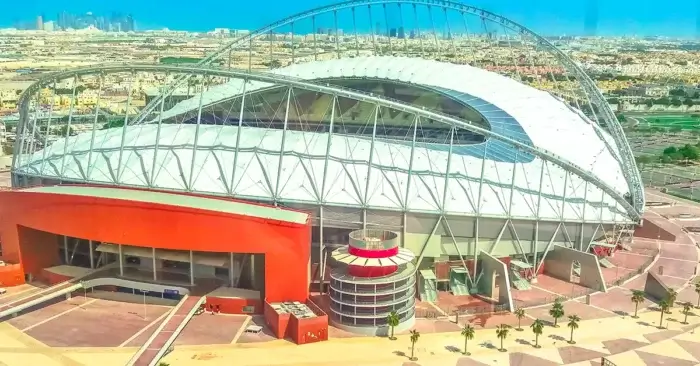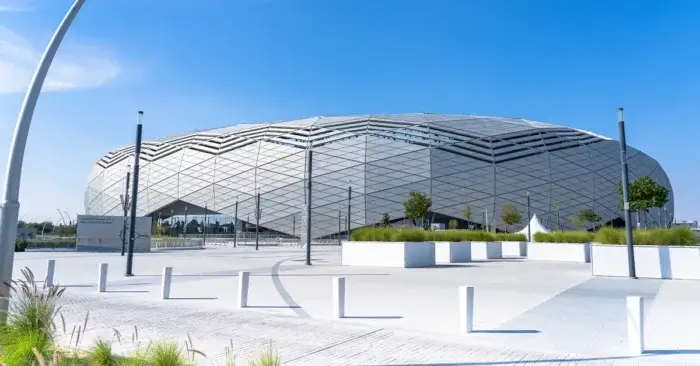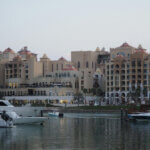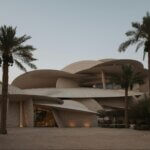Qatar is home to some of the most modern and impressive stadiums in the world, built to host global sporting events and showcase the nation’s passion for football and other sports. Known for their unique designs, advanced facilities and world-class atmosphere, these venues have become iconic landmarks.
From architectural marvels to fan-friendly arenas, each stadium reflects Qatar’s commitment to sport and culture. Whether you are visiting for a major tournament or simply exploring, the best stadiums in Qatar offer an unforgettable experience that combines tradition, innovation and sporting excellence.
Best Stadiums in Qatar
The top football stadiums in Qatar are not just sporting venues but architectural masterpieces. Football holds a special place in Qatari culture, with fans gathering at the iconic Khalifa International Stadium since its opening in 1976. In preparation for the FIFA World Cup 2022, seven brand-new stadiums were built, while Khalifa received a significant upgrade.
Spread across the country yet conveniently located, each stadium is within an hour’s drive from Doha, making them easily accessible for fans and visitors alike. The following are some of the top 10 stadiums in Qatar for football, cricket and other sports:
1. Lusail Iconic Stadium
Lusail Iconic Stadium is the biggest football stadium in Qatar and a valid symbol of the country’s sporting ambition. Designed with inspiration from traditional lanterns, it reflects the fusion of modern engineering and Qatari heritage.
With a capacity of around 88,000 spectators, it took centre stage during the FIFA World Cup 2022, hosting several key matches, including the memorable final between Argentina and France.
The stadium is equipped with state-of-the-art cooling technology powered by solar energy, ensuring a comfortable environment even in Qatar’s warm climate. Located in Lusail City, a modern urban development just north of Doha, the venue is surrounded by hotels, restaurants and transport links, making it easily accessible for visitors.
Today, Lusail Iconic Stadium stands not only as a world-class football venue but also as a landmark of culture, sustainability and national pride.
Location
Lusail, Qatar
https://share.google/XVG2RAIOqWLUDq6e9
Capacity
88,000 spectators
2. Khalifa International Stadium
Khalifa International Stadium is one of the most historic and iconic football stadiums in the world, hosting the 2022 FIFA World Cup in Qatar. First opened in 1976, it has long been the home of Qatari football and a stage for major international tournaments.
Renovated extensively in 2005 and again in 2022, the stadium now seats around 45,000 fans and features modern facilities, including advanced cooling technology.
Its distinctive dual arches have become a national landmark, symbolising Qatar’s sporting pride. As part of the Aspire Zone in Al Rayyan, the stadium hosted matches during the 2022 FIFA World Cup, including the third-place play-off.
Location
Al Waab Street, Doha
https://share.google/p3W40wxZDc8ubZRs1
Capacity
45,000 spectators
3. Ahmad Bin Ali Stadium / Al Rayyan Stadium
Ahmad Bin Ali Stadium in Al Rayyan, situated just west of Doha, is a modern marvel that was inaugurated on Qatar National Day, 18 December 2020. With a capacity of around 40,000 during the World Cup, it boasts a striking façade inspired by desert themes, including sand dunes, native flora and fauna, family, trade and a unifying shield motif that showcases Qatari heritage.
Designed with sustainability in mind, over 90 per cent of materials from its predecessor were recycled or reused. It earned a four-star GSAS rating and will later reduce capacity to 20,000, with surplus seats to be donated abroad.
Location
Ar-Rayyan, Qatar
https://share.google/zHMXzuSRmhcClsB5Y
Capacity
40,000 spectators
4. Al-Bayt Stadium
Al Bayt Stadium in Al Khor is one of the most unique FIFA stadiums in Qatar, built primarily for football. Opened in 2021, it gained worldwide attention as the venue for the opening match of the 2022 FIFA World Cup. With a capacity of around 60,000, the stadium is designed to resemble a traditional Bedouin tent, symbolising Qatari culture and hospitality.
Inside, fans enjoy advanced cooling technology and modern facilities, while the retractable roof adds to its versatility. Beyond the World Cup, it continues to host major football matches and community events.
Location
Al Khor, Qatar
https://share.google/22nol6nMDxRx9zbMD
Capacity
60,000 spectators
5. Al-Janoub Stadium
Al Janoub Stadium in Al Wukair stands out for its striking design, inspired by the sails of traditional Qatari dhow boats, a nod to the city’s seafaring heritage. Opened in 2019, it was the first stadium built from scratch for the 2022 FIFA World Cup.
The venue can accommodate around 40,000 fans during major tournaments, later reducing to 20,000 for local events, with the upper-tier seats donated to sporting projects abroad. Surrounded by parkland with cycling and running tracks, Al Janoub is more than a football stadium—it’s a lively community hub.
Location
Al Wukair, Qatar
https://share.google/YrLWOuCCKBH6h4jup
Capacity
40,000 spectators
6. Al Thumama Stadium
Al Thumama Stadium is a striking symbol of Qatari creativity and cultural pride. Designed by architect Ibrahim Mohammed Jaidah, its circular form takes inspiration from the gahfiya, the traditional woven cap worn by men across the Arab world.
Construction began in 2017 and the stadium was officially opened in 2021, just in time for the FIFA World Cup. With a capacity of 40,000 during major tournaments, it will later be reduced to 20,000 to suit local needs.
Beyond football, the more expansive complex has been developed into a vibrant community hub. It features facilities for handball, volleyball, basketball and swimming, along with cycling and running tracks, retail spaces and commercial units, making it an integral part of daily life.
Location
Doha, Qatar
https://share.google/RAZXJjk5kzez7BgzN
Capacity
40,000 spectators
7. Jassim bin Hamad Stadium
Jassim bin Hamad Stadium, in Doha’s Al Sadd district, has served as Al Sadd SC’s home ground since 1975 and also hosts Qatar’s national football team. Named in honour of Jassim bin Hamad bin Abdullah Al-Thani, it holds around 15,000 spectators following renovations in 2004 and 2010.
The stadium blends modern and traditional Qatari design, featuring a retractable roof and exterior shaped like dhow sails. Beyond football, its grounds include a café, a mosque, an athletics track, a swimming pool, training areas and a multi-sports hall (with a 1,000-seat capacity) used for basketball, volleyball, handball and more.
It has hosted esteemed competitions, including the 2019 FIFA Club World Cup, the AFC Asian Games, the Pan Arab Games and the Supercoppa Italiana.
Location
Doha, Qatar
https://share.google/VBpK2ijQZxvO28MUP
Capacity
15,000 spectators
8. West End Park International Cricket Stadium / Asian Town Cricket Stadium
West End Park International Cricket Stadium, also known as Asian Town Cricket Stadium or Al-Arabi Stadium, is one of the primary cricket stadiums in Qatar. Opened in 2012 in the Asian Town complex at the Industrial Area, it was built to cater to the large South Asian community in Doha.
The stadium has a seating capacity of around 13,000 and is equipped with floodlights, making it suitable for day and night matches. Over the years, it has hosted several international fixtures, including matches of the ICC World Cricket League and bilateral series involving associate nations.
Besides international events, it is a lively centre for domestic tournaments, community leagues and cultural activities, providing expatriate communities with a strong connection to their home.
Location
Asian Town, Street, 100, one 56, Doha
https://share.google/k1vcH0ccVhLtX9Spk
Capacity
13,000 spectators
9. Stadium 974
Stadium 974 was one of Qatar’s most innovative venues for the 2022 FIFA World Cup. Designed by Spain’s Fenwick Iribarren Architects, in collaboration with Schlaich Bergermann Partner and Hilson Moran, the stadium was constructed using exactly 974 repurposed shipping containers and recycled steel.
With a capacity of around 40,000, it hosted several group and knockout matches during the tournament. The number 974 also reflects Qatar’s international dialling code, giving the arena added symbolic value.
True to its sustainable concept, the stadium was fully dismantled after the World Cup, making it the first temporary venue in tournament history to undergo such a process.
Location
Doha, Qatar
https://share.google/DwsBxyRcWRqBOqEB3
Capacity
40,000 spectators
10. Education City Stadium
Education City Stadium, located in the heart of Qatar Foundation’s Education City, is one of the standout venues of the FIFA World Cup 2022. Nicknamed the “Diamond in the Desert,” its bold, geometric façade sparkles by day and glows by night, symbolising knowledge and growth.
The stadium originally accommodated 44,000 fans during the tournament but is designed to scale down to 20,000, with surplus seats donated to developing countries. Beyond football, the venue sits within a hub of universities, research centres and community facilities, making it a lasting legacy for education, sport and sustainability in Qatar.
Location
Gurshaiganj, Qatar
https://share.google/G0nqlpXjUkAp7NJqQ
Capacity
44,000 spectators
Key Takeaways
Qatar’s stadiums are more than sporting venues; they are cultural landmarks, architectural marvels and community hubs. From the grandeur of Lusail Iconic Stadium to the heritage-inspired Al Bayt and the innovative, temporary Stadium 974, each arena reflects Qatar’s vision of blending tradition with modernity.
Designs inspired by local culture, like Al Thumama’s gahfiya cap or Al Janoub’s dhow sails, highlight national identity, while advanced cooling systems and sustainable construction emphasise innovation.
Many stadiums now serve as multi-sport and community centres, ensuring their legacy extends beyond football. Together, they showcase Qatar’s creativity, pride and commitment to sport on a global stage.
FAQs
1. How Many Stadiums Are There In Qatar?
Qatar has eight main stadiums that were used for the FIFA World Cup 2022, spread across different cities.
2. Which Is The Biggest Stadium In Qatar?
The largest stadium in Qatar is Lusail Iconic Stadium, with a capacity of around 88,000 spectators.
3. What Are The New Stadiums In Qatar?
The new stadiums built for the World Cup include Lusail, Al Bayt, Al Thumama, Al Janoub, Ahmad Bin Ali, Education City, Stadium 974 and the renovated Khalifa International Stadium.
4. Is Stadium 974 Still In Qatar?
No, Stadium 974 was a temporary venue built from shipping containers. It was fully dismantled after the World Cup 2022.
Qatar’s stadiums stand as lasting symbols of innovation, culture and sporting passion. Each venue not only hosted unforgettable World Cup moments but also continues to serve communities with world-class facilities. Together, they showcase Qatar’s vision of leaving a legacy that goes far beyond football.

